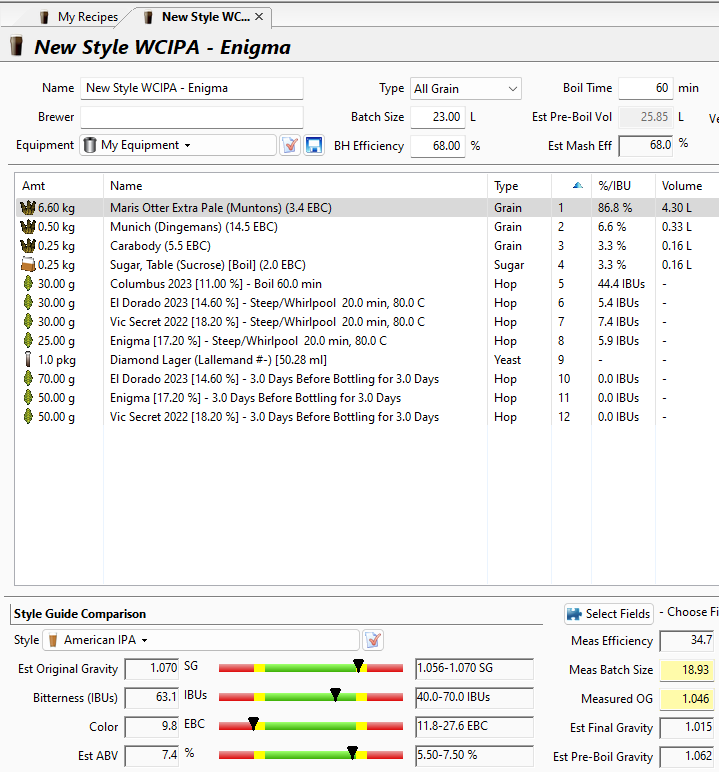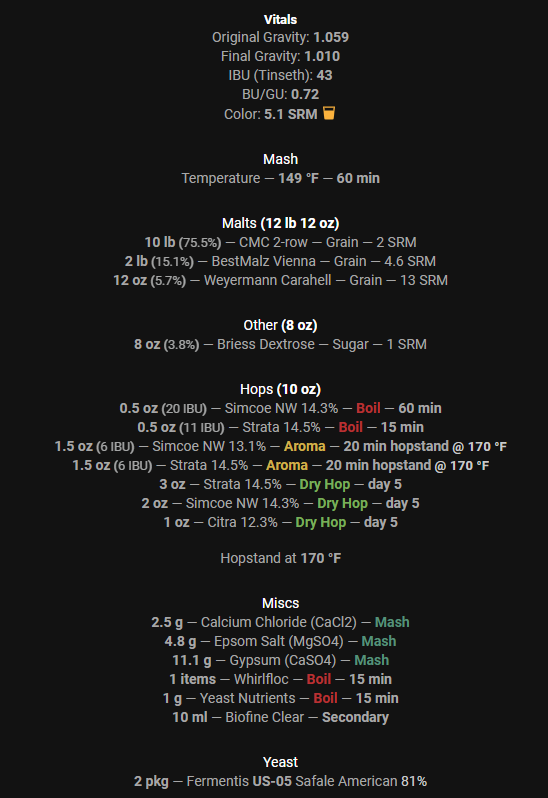That would be WLP835 right? I assume this would be at ale temps not lager temps?
White Labs shows optimum temperature for 835x as 50F-54F, but Creek Park brewers said they pitched at around 67F and kept it there for the duration {note: partially pressurized @ <5 psi early, then spunded after krausening @ 15 psig}. 34/70 does alright at those pressures and temperatures, but I'm not sure about 835x. Guess I'm about to find out, but the pros say it works, and they've won more awards at big events than I ever will.
In fairness, the Creek Park brewers didn't
specifically name WLP-835x (there are
allegedly others: Imperial L26, Wyeast 2105-PC {haven't released it in three years}, Propagation Labs MIP-620 {allegedly the yeast Coors uses}, and a few others I've not used, according to a web search.
I've used the 2105-PC and L26 in the past with good results, but the only 2105 I've seen in recent memory are the frozen samples in my freezer. L26 is, I think, readily available, but my default is WLP-835x, probably due to inertia on my part, and the fact that I stock up on the White Labs whenever it comes out of the Vault.
I'm actually quite a fan boi for Andechs, using (but mostly re-using) it in a wide variety of German lagers, along with 860 Augustiner.































![Craft A Brew - Safale BE-256 Yeast - Fermentis - Belgian Ale Dry Yeast - For Belgian & Strong Ales - Ingredients for Home Brewing - Beer Making Supplies - [3 Pack]](https://m.media-amazon.com/images/I/51bcKEwQmWL._SL500_.jpg)




























